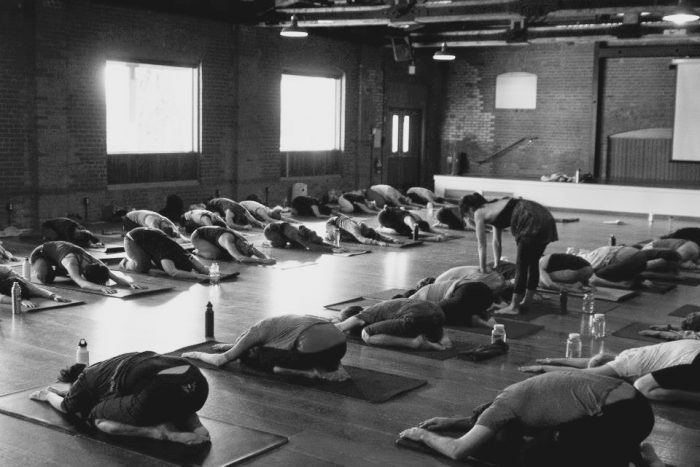Do not touch your students without permission.
I repeat, do not touch your students without permission.
Being in a yoga studio does not eliminate the concept of boundaries.
Being in a yoga studio is not a safe space or a sanctuary for everyone.
Being a yoga teacher does not allow you to do whatever the hell you want (regardless of which gender the teacher or student is).
As a yoga teacher and former studio owner, a major issue I’ve witnessed in the yoga community is a lack of awareness on what a yoga teacher’s actual scope of practice is.
Spoiler alert: the scope of practice isn’t very big.
The amount of unqualified and even potentially dangerous mental, physical, and general health advice I’ve heard scares the sh*t out of me.
I know it’s coming from a good place of wanting to be helpful, but diagnosing, evaluating, and giving advice with such conviction can do more harm than good.
In regards to physical touch and adjustments, as teachers, we have to remember that we usually have no idea what the background of students stepping into our classes is, even if we’ve known them for 5, 10, or 15 years. Very few people are public about a history of abuse, rape, and trauma, even with their closest of friends, let alone their yoga teachers.
Having a history of sexual abuse is real, trauma is real, and having boundaries invaded is very, very real.
Having yoga teachers (a.k.a. strangers, often), or people we kinda-sorta know, intimately adjust those who have suffered is not okay. It can trigger flashbacks, cause anxiety, be invasive, and lead a student to feeling unsafe in their own body.
Even if it’s not a past trauma, some people just want to be left in their own space. And we need to respect that.
I believe the reminder of asking permission to touch is a simple and utterly important concept that needs to be taught in every single teacher training and be a policy at every yoga studio. And from what i’ve heard, it unfortunately isn’t.
And to be completely honest, the amount of anatomy and physiology that is covered in a 200-hour training is not enough to give safe physical adjustments. I’ve seen more than my fair share of frightening adjustments during classes. And I’ve heard even more stories from students who were too nervous to tell their teacher (especially the more well-known ones), that what they did was not okay. Those students left class feeling unsettled and sometimes even injured.
What we need to do, as teachers, is be more aware of our scope of practice.
For those who have only completed an initial 200-hour yoga training (nothing wrong with this of course), but as a reminder this is a foundational training with a basic overview of the body.
For those who have thousands and thousands of hours under their belt, have numerous trainings, and have sat with the best of the best, it still doesn’t allow them to touch without permission. (I have had conversations with people who believe they are allowed to do certain things because of who they have studied with). Eeek. Scary.
Even if yoga teachers are also a chiropractors, kinesiologists, or doctors, they still need to ask.
There are many ways to ask permission during a yoga class. Here are two ways:
- At the beginning of class, whether everyone is in child’s pose, lying on the ground, or seated with eyes closed, ask people who do not want to be physically adjusted today to raise a hand, wiggle their fingers, or fold a corner of their mat under.
- If it’s too big of a class to remember who said yes or no, when approaching a student, the teacher can quietly ask if it’s okay to adjust them. And if it’s an advanced adjustment keep checking in with them throughout.
With that said, there are some really incredible trainings that go more in depth in this topic and are focussed on trauma and mental health with the application of yoga and meditation. I’ve taken some myself and found an invaluable well of information, deepened my understanding of trauma, and completely changed the way I both practice and teach (in the most inclusive and nourishing of ways).
In addition to the incredible and scientifically based information those trainings provided, what I really appreciated is that they make it crystal clear what is in our scope of practice and what is not.
Yoga teachers, regardless of who we’ve sat with, the amount of trainings we’ve done, or how many hours we have under our belt, we need to remember our scope of practice.
Always ask permission to touch.
And when in doubt, don’t.
~
~
~
Author: Alexa Torontow
Image: Used with permission from Yoga Warehouse
Editor: Travis May
Copy Editor: Yoli Ramazzina
Social Editor: Waylon Lewis












Read 0 comments and reply